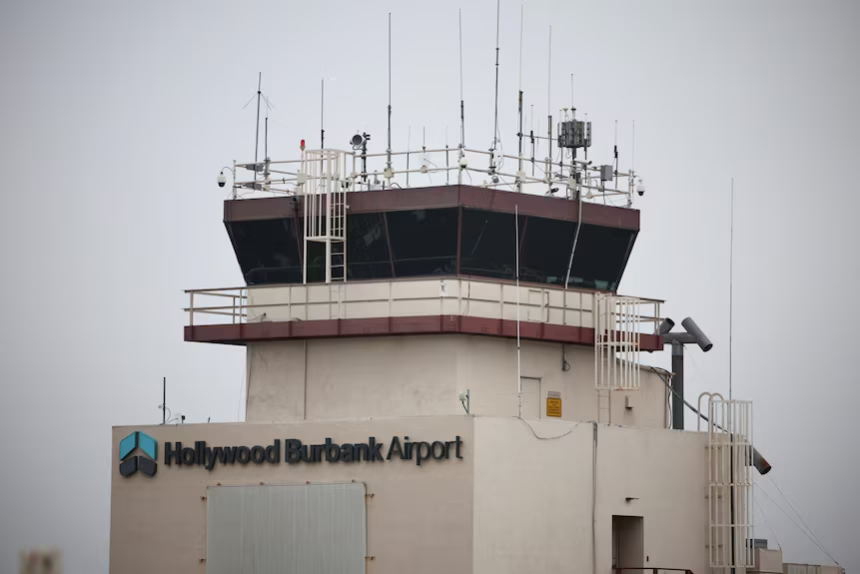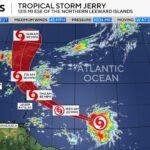U.S. Government Shutdown: Impacts on Air Travel and Federal Services
As the U.S. government shutdown enters its second week, the ramifications are becoming increasingly evident across various sectors, particularly in air travel. With over 3,000 flights delayed on Tuesday alone, the situation is raising alarms about safety and efficiency in the aviation sector. The shutdown has left federal aviation workers, including air traffic controllers, in a precarious position, as they are expected to continue their duties without pay.
Flight Delays and Airport Operations
The ongoing shutdown has led to significant disruptions at airports nationwide. Major hubs such as Nashville, Boston, Chicago, and Philadelphia are experiencing severe delays due to a shortage of air traffic controllers and security personnel. Notably, Hollywood Burbank Airport in California operated for approximately six hours without a single air traffic controller on Monday evening, as reported by the state’s governor on social media. This incident highlights the critical staffing shortages that have plagued the U.S. air traffic control system for over a decade.
The Federal Aviation Administration (FAA) has confirmed that departures from Hollywood Burbank Airport were delayed by about two-and-a-half hours due to these staffing issues. Transportation Secretary Sean Duffy noted a slight uptick in controllers calling in sick, exacerbating the already strained system. With about 13,000 air traffic controllers and 50,000 security officers working without pay, the situation is becoming increasingly untenable.
The Broader Context of the Shutdown
The current government shutdown, which began just after midnight last Wednesday, marks the first such event in over six years. The impasse stems from a failure to pass a budget, with party leaders unable to reach a compromise. While most federal workers have been furloughed, essential personnel, including those in aviation, are required to continue working without compensation.
Historically, government shutdowns have been a tool for political leverage, often resulting from disagreements over budget allocations. In this instance, Democrats aimed to negotiate an extension of healthcare benefits, while Republicans have resisted any compromise. The Senate recently blocked a bill intended to temporarily extend government funding, leading to the suspension of non-essential government operations.
Safety Concerns Amid Staffing Shortages
The staffing shortages at airports are not just an inconvenience; they pose serious safety risks. The FAA has had to implement measures to slow down air traffic to ensure safety in the skies. Duffy emphasized the importance of maintaining safe airspace, stating, “If we don’t have controllers, we’re going to make sure the airspace is safe. So what we do is we’ll slow traffic.”
The Australian government has also issued travel advisories, warning citizens about potential delays and longer queue times at U.S. airports due to the shutdown. Travelers are encouraged to check with their airlines to confirm any changes to their travel plans.
Historical Perspective on Government Shutdowns
The phenomenon of government shutdowns is not new; it has been a possibility since 1976 when Congress established the modern budget process. However, such events have been relatively rare. The longest shutdown in U.S. history occurred from December 2018 to January 2019, lasting 35 days. That shutdown was also marked by significant disruptions in air travel, as a rise in sick calls among air traffic controllers led to safety concerns and operational challenges.
In contrast, some recent shutdowns have lasted only a few days, making it difficult to predict how long the current situation will persist. The political landscape remains fraught, with both parties entrenched in their positions.
The Future of the Shutdown: What Lies Ahead?
As the shutdown continues, questions arise about when it will end and what the implications will be for federal workers. Essential employees, including those in aviation, are expected to receive back pay once the government reopens, following laws enacted after the 2019 shutdown. However, uncertainty looms as the current administration has suggested that back pay may not be guaranteed, a tactic seen as an attempt to pressure lawmakers into action.
The ongoing situation underscores the fragility of the U.S. government’s operational framework and the far-reaching consequences of political stalemates. With air travel already under strain, the potential for further disruptions looms large, affecting not just travelers but also the broader economy.
Conclusion
The U.S. government shutdown is having a profound impact on air travel and federal services, with significant delays and safety concerns emerging as key issues. As the political stalemate continues, the future remains uncertain for both federal workers and travelers alike. The situation serves as a stark reminder of the interconnectedness of government operations and the potential consequences of political gridlock. As the nation watches closely, the hope is for a swift resolution that prioritizes the safety and well-being of all citizens.











